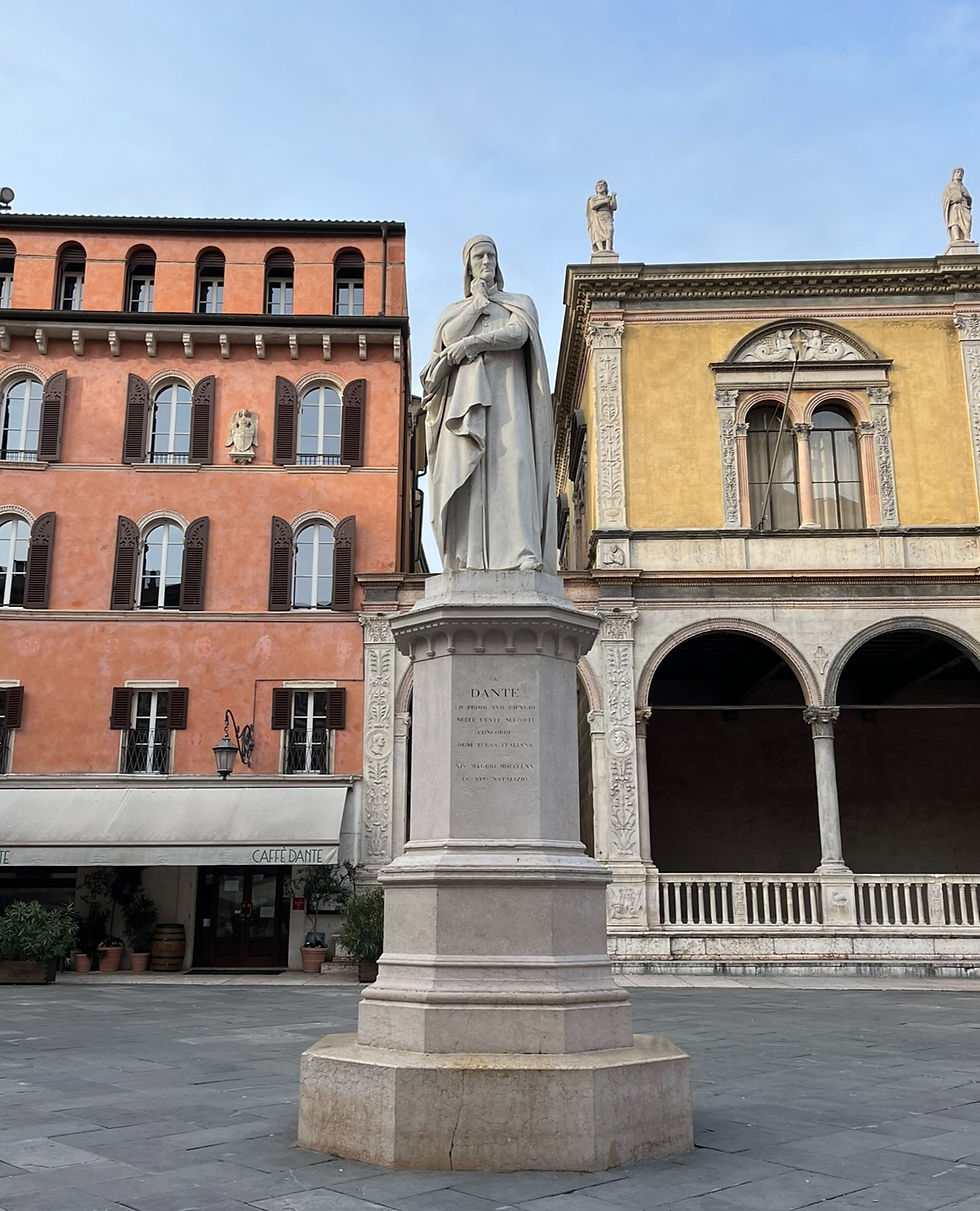Italy in Winter: Verona, The City of Love
- Cristina Dwyer

- Feb 26, 2024
- 4 min read
Updated: Feb 29, 2024
I arrived in Verona on a refreshing January morning, following a short train ride from Peschiera del Garda, where I was staying. Stepping out of the bustling rail station, it felt like the "City of Love" was offering me a warm welcome and a promise of a delightful day ahead.
Strolling along the charming cobblestone streets had become a familiar pleasure, and I loved every moment of it. Verona, in particular, is very pedestrian-friendly, with most of its architectural and historical landmarks concentrated within the historical center. While I had an itinerary in mind, I didn't follow the map's directions too strictly, knowing that spontaneous detours often lead to the most memorable discoveries.
One of the first iconic landmarks I encountered was the Verona Arena ( Arena di Verona), a remarkably well-preserved Roman amphitheater dating back to the 1st century AD.

Located in Piazza Bra, the city's largest square, this ancient arena continues to host operatic and theatrical performances during the summer months, drawing audiences from around the globe.
Traces of the Roman times were visible around the city and they were blending in with the modern live, like this open archeological site, a living museum in the middle of the everyday life of the city.

Verona is perhaps best known as the backdrop for Shakespeare's timeless tragedy, "Romeo and Juliet". Naturally, I couldn't resist visiting Juliet's House (Casa di Giulietta), a major attraction that draws romantics eager to stand on the balcony associated with the famous scene from Shakespeare's play.
However, I found myself content to admire it from the internal courtyard, pleasantly surprised to capture unobstructed photos without the usual crowds of tourists.
Verona's rich cultural and religious heritage is prominently displayed in its churches, with four standing out for their unique architecture and must-see status: Basilica di San Fermo Maggiore, Basilica di San Zeno Maggiore, Il Complesso de la Cattedrale and Basilica di Santa Anastasia.
Basilica di San Fermo Maggiore
The Basilica di San Fermo is a fascinating architectural marvel—a church within a church atop yet another church. How is that possible, you might wonder? Well, this Romanesque-style church, erected in the 11th century, was ingeniously designed with two levels: the Upper Church served for public ceremonies, while the Lower Church was dedicated to safeguarding the relics of Saints Fermo and Rustico. What adds to its historical allure is that the foundation of the church rests upon the remnants of an early Christian church from the 5th century. Visitors can catch glimpses of these ancient foundations through glass panels in the Lower Church, offering a tangible connection to Verona's layered past.
The order I am describing these churches is the order I visited them, a pure result of itinerary optimization. However, I must confess that out of all four, San Fermo is my favourite one. If you only have time for one church, I highly recommend seeing this one.
Basilica di San Zeno Maggiore
The Basilica di San Zeno, honouring Verona's patron saint, stands as a pinnacle of Romanesque architecture in Italy. Its grandeur is evident in the towering columns, the frescoes spanning different epochs, and the crypt enshrining the relics of San Zeno—its open entrance beckoning from across the church, and last but not least, the magnificent handcrafted bronze doors, each bearing religious scenes meticulously etched in metal.
Il Complesso de la Cattedrale / Basilica di Santa Maria Matricolare (The Cathedral)
The Cathedral Complex, commonly known as The Cathedral, encompasses the primary basilica, Santa Maria Matricolare, along with the Cathedral’s Baptisery, St. Giovanni in Fonte, and the Church of St. Elena. This architectural and religious ensemble is further enriched by the archeological excavations within the basilica's vestibule.
Basilica di Santa Anastasia
The Basilica of St. Anastasia stands as the largest church in Verona, distinguished by its three large aisles upheld by twelve striking pillars crafted from red Veronese marble. I was impressed by the the floor’s mosaic unique design, of three colors: white and black, symbolic of the Dominican habit, intertwined with red, evoking the sacred imagery of Christ's blood.
The heart of Verona is the stunning Piazza delle Erbe, a vibrant square surrounded by medieval buildings and overlooked by the Torre dei Lamberti, a medieval tower offering panoramic views of the city. The square is a lively market during the day, with vendors selling fresh produce, flowers, and local crafts.
Not far from there, in the elegant medieval Piazza dei Signori, I found the statue of a rather contemplative Dante Alighieri.

Adjacent to the Piazza delle Erbe, the pedestrian-only streets were a pure treasure of charming boutiques with enticing end-of-season sales and inviting osterias.
A tour of Verona would not be complete without setting foot on the Castelvecchio Bridge, an arch bridge built of red brick and marble, dating back to the 14th century. The thick, tall walls exuded a stoic pride and strength, softened only by a few openings that frame distant city views. The sound of a hand pipe player on the bridge completed the medieval, serene ambiance.
Compared to Rome and Venice, Verona felt more subdued. Visiting in early January, I had the sense of blending in with the local rhythm—I didn’t feel like a tourist. And today, a few weeks later, this is the feeling that comes to me first as I think back on this beautiful city and its enchanting atmosphere, blending spirituality, art, and romance.
Related Posts:



































































This was great and really appreciated the pics. We visited Verona after Venice, but I don't have as many clear memories. I think I need to visit again!